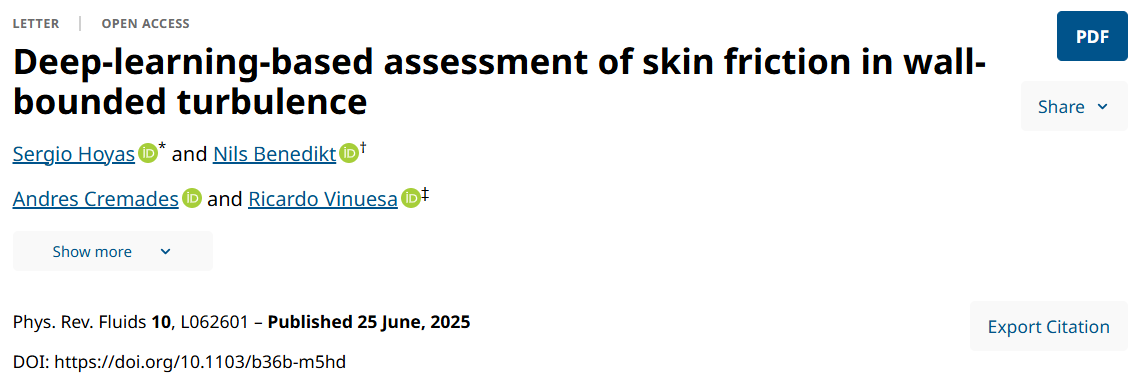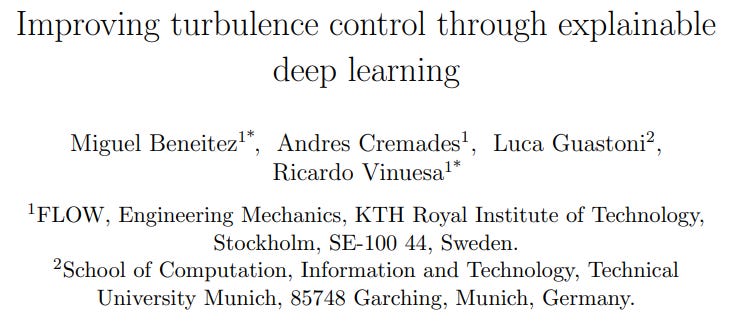Making any ML Prediction Explainable: Part 1
Making explainable predictions in scientific applications, agnostic to the method/model/problem. Especially focusing on aerodynamics, heat transfer, and mechanical/structural problems
I am very passionate about this series— three planned posts to start:
A warm start introduction, followed by a publication spotlight to kick things off.
A literature survey and methods overview on explainability methods one can employ for their ML predictions.
Code proof of concept tutorial: how to analyze complex results (3D fields, like aerodynamic simulation results) and explain which have the largest impact on overall performance (e.g. drag coefficient, aircraft performance, etc.)
Introduction.
First, let’s set the stage for those less familiar with aerodynamics and engineering simulation. If you are a techy like me, don’t worry, we will ramp-up quick to the good stuff (I am trying to get better at not alienating readers).
“Turbulence is also the primary cause of viscous drag with 30% of the energy consumption worldwide being spent on overcoming drag in transportation” [1]
Yes, you read that right — 30% of energy consumption worldwide originates from managing these flow-fields in our transportation (cars, ships, planes, …). Even as someone with a PhD and nearing 10 years experience in industry, that figure staggers me and makes me double-take. You can read the full Key World Energy Statistics report cited here [2]. This idea of reducing energy consumption (and also C02 emissions) is one example that can make almost anybody appreciate the need to better understand turbulent flow.
Of course, humanity has (for decades) addressed this problem with remarkable advances in core competencies like aerospace and mechanical engineering, as well as numerical methods, and will continue to do so. Since it’s infeasible for each company to build hundreds of aircrafts for physical testing before finalizing/delivering the next model of their aircraft, society really relies on this ‘numerical simulation piece’ during the design process. For those not initiated on the topic, we make digital representations (called Digital Twins) of our designs (e.g. aircrafts) and then do scientifically accurate numerical approximations of their physical behavior. Through these numerical methods we understand our physics (e.g. aerodynamics) as a result of our design choices (in this case aerodynamics, mechanical behavior, thermodynamic performance, vibrations, among others). One class of such methodologies is called “Computational Fluid Dynamics”, or CFD.
New emerging technologies, like AI/ML, will surely be useful tools to supplement existing know-how in these endeavors. It will not replace these aforementioned core disciplines and methodologies, don’t get it twisted, but since it is such an important topic to tackle (30% is quite a lot) any added understanding or help makes a big difference.
There are a lot of use cases of merit for AI/ML in this problem space, but we are going to focus on a specific one in this blog series:
When human lives are at stake, like when flying at 600 mph at 30,000 feet in the air, I need verification and explainability from my machine learning predictions in order to trust they are valid and usable.
This is an entire beautiful field of important research ongoing for groups living at the intersection of science and AI/ML. The problem outlined presently focuses on ML surrogates -- models that we make to actually predict our aerodynamic/mechanical results outright, instead of using these numerical methods like CFD. We only sometimes ought to do this though, such as early in the design process, which later we validate these ML predictions with tried and tested methods, like CFD. These numerical methods have been built and rigorously validated/tested/improved for decades, so this is no easy feat ramping up our SciML model fidelity to even get on the same playing field.
Presently, we are going to start by reviewing a specific publication, which focuses on explaining how and why aerodynamic fields are the way that they are, and more specifically the turbulence. The approach elegantly merges relatively simple data science concepts to explain complicated turbulence behavior, in order to gain new insights into the mechanisms behind turbulent flow.
Again, part 1 herein is an introduction and will get technical pretty quickly from here onwards.
Paper Spotlight.
This intriguing publication, pictured below [3], is the one we will review in part 1:
This one is also related to this additional publication:
Thank you professor Vinuesa for your endorsement to write these blog articles!



